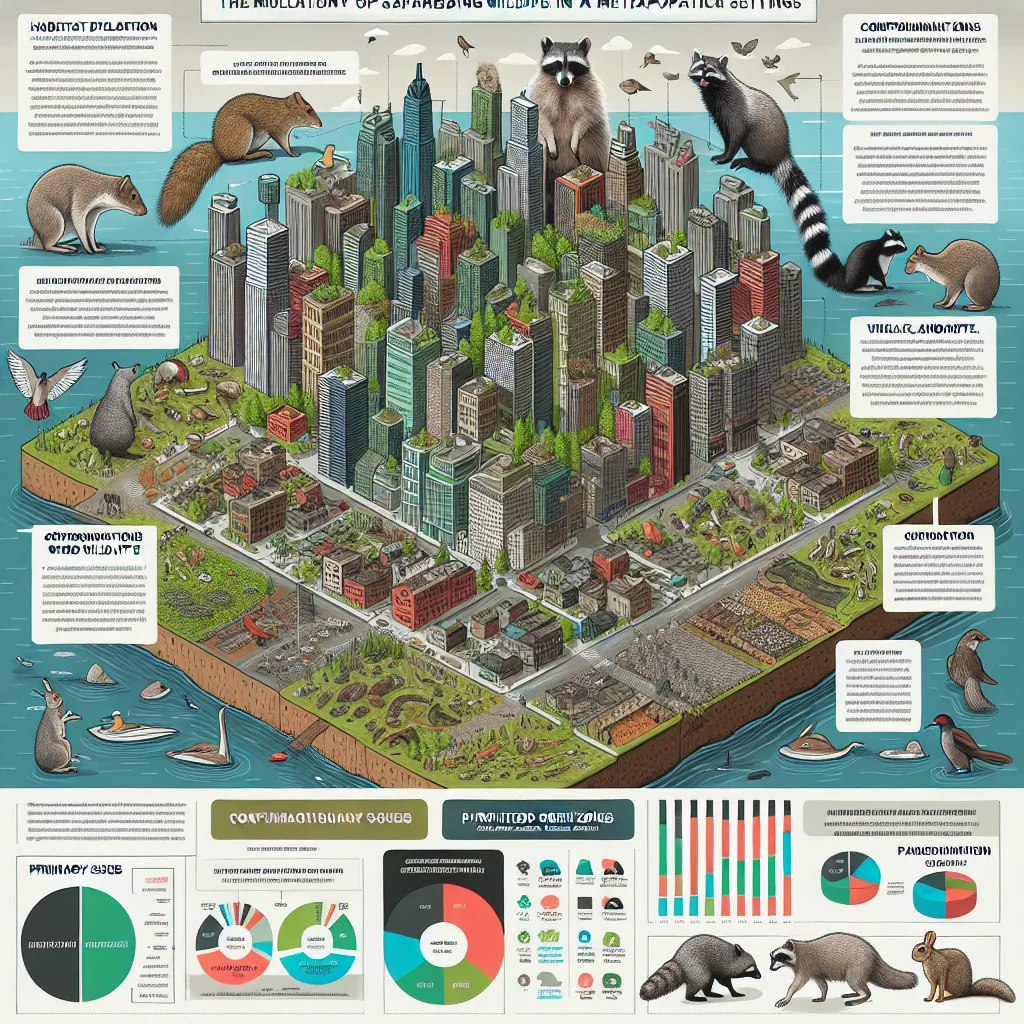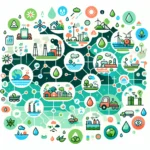The IELTS Reading section tests your ability to understand complex texts and answer various question types. One increasingly common topic in recent years is the challenges of protecting wildlife in urban areas. This subject combines elements of urbanization, conservation, and environmental science, making it a prime candidate for IELTS Reading passages. Based on its relevance and frequency in past exams, it’s highly likely that you may encounter a similar theme in future IELTS tests.
 Urban wildlife protection challenges
Urban wildlife protection challenges
IELTS Reading Practice Test
Reading Passage
Balancing Urban Development and Wildlife Conservation
A. As cities expand and human populations grow, the challenges of protecting wildlife in urban areas have become increasingly complex. Urban development often leads to habitat destruction, fragmentation, and degradation, forcing animals to adapt to new environments or face extinction. This conflict between urban growth and wildlife conservation has become a critical issue for environmentalists, urban planners, and policymakers worldwide.
B. One of the primary challenges in urban wildlife conservation is habitat loss. As natural areas are converted into residential, commercial, and industrial zones, many species lose their homes and food sources. This loss of habitat can lead to decreased biodiversity and disrupted ecosystems. For example, the destruction of wetlands for urban development has led to significant declines in amphibian populations in many cities.
C. Another significant challenge is human-wildlife conflict. As animals lose their natural habitats, they are forced to venture into urban areas in search of food and shelter. This can lead to encounters between humans and wildlife, which are often dangerous for both parties. In some cities, large predators like coyotes or bears have become a concern for residents, while smaller animals like raccoons and squirrels can cause property damage and spread diseases.
D. Pollution is another major threat to urban wildlife. Air pollution can harm birds and insects, while water pollution affects aquatic ecosystems. Light pollution disrupts the natural behaviors of nocturnal animals and can disorient migratory birds. Noise pollution from traffic and construction can interfere with animal communication and breeding patterns.
E. The fragmentation of green spaces in urban areas presents another challenge. As cities grow, parks and natural areas often become isolated “islands” of habitat, making it difficult for animals to move between them. This isolation can lead to genetic bottlenecks and reduced population viability for many species.
F. Despite these challenges, there are promising strategies for protecting urban wildlife. One approach is the creation and preservation of wildlife corridors, which are connected green spaces that allow animals to move safely through urban areas. These corridors can include linear parks, greenways along rivers, and even specially designed wildlife overpasses or underpasses across highways.
G. Another effective strategy is the implementation of wildlife-friendly urban planning. This can include regulations that require developers to preserve a certain percentage of natural habitat within new developments, or the incorporation of green roofs and walls that provide habitat for birds and insects. Some cities have also adopted “dark sky” ordinances to reduce light pollution and protect nocturnal wildlife.
H. Education and community engagement play a crucial role in urban wildlife conservation. Programs that teach residents about local wildlife and how to coexist with animals can reduce human-wildlife conflicts and foster a sense of stewardship for urban ecosystems. Citizen science projects, where residents help monitor and record wildlife sightings, can also provide valuable data for conservation efforts.
I. Innovative technologies are also being employed to protect urban wildlife. For example, wildlife crossing structures equipped with cameras and sensors can help monitor animal movements and reduce roadkill. Advanced mapping technologies are being used to identify and protect critical habitats within cities.
J. In conclusion, protecting wildlife in urban areas is a complex challenge that requires a multifaceted approach. By combining habitat preservation, wildlife-friendly urban planning, community engagement, and innovative technologies, cities can become more hospitable to wildlife while still meeting the needs of human residents. As urbanization continues to spread globally, finding ways to coexist with wildlife in our cities will be crucial for maintaining biodiversity and creating more sustainable urban environments.
Questions
Questions 1-5
The reading passage has 10 paragraphs, A-J.
Which paragraph contains the following information?
Write the correct letter, A-J, in boxes 1-5 on your answer sheet.
- An explanation of how isolated green spaces affect wildlife
- A description of how pollution impacts urban wildlife
- A mention of technology being used to protect urban animals
- An example of how habitat loss affects specific animal groups
- A suggestion for involving local residents in wildlife conservation
Questions 6-10
Complete the sentences below.
Choose NO MORE THAN TWO WORDS from the passage for each answer.
Write your answers in boxes 6-10 on your answer sheet.
- The conversion of natural areas into urban zones often results in decreased ___ and disrupted ecosystems.
- In urban areas, encounters between humans and wildlife can be ___ for both.
- ___ pollution can interfere with animal communication and breeding patterns.
- Wildlife corridors can include linear parks, greenways along rivers, and specially designed wildlife ___ or underpasses.
- Some cities have adopted “___ sky” ordinances to protect nocturnal wildlife.
Questions 11-13
Choose the correct letter, A, B, C, or D.
Write the correct letter in boxes 11-13 on your answer sheet.
-
According to the passage, which of the following is NOT mentioned as a challenge for urban wildlife?
A. Habitat loss
B. Climate change
C. Human-wildlife conflict
D. Pollution -
Wildlife-friendly urban planning can include:
A. Banning all new construction in cities
B. Requiring developers to preserve some natural habitat
C. Relocating all wildlife to rural areas
D. Increasing the number of zoos in cities -
The passage suggests that protecting urban wildlife:
A. Is impossible due to continued urban growth
B. Requires only technological solutions
C. Needs a multifaceted approach
D. Should be the sole responsibility of government agencies
Answer Key and Explanations
-
E
Explanation: Paragraph E discusses how the fragmentation of green spaces in urban areas leads to isolated “islands” of habitat, affecting wildlife movement and genetic diversity. -
D
Explanation: Paragraph D is entirely devoted to explaining how different types of pollution (air, water, light, and noise) impact urban wildlife. -
I
Explanation: Paragraph I mentions innovative technologies being used to protect urban wildlife, such as wildlife crossing structures with cameras and sensors. -
B
Explanation: Paragraph B provides a specific example of how habitat loss affects amphibian populations due to the destruction of wetlands for urban development. -
H
Explanation: Paragraph H discusses education and community engagement, including citizen science projects where residents help monitor and record wildlife sightings. -
biodiversity
Explanation: Paragraph B states, “This loss of habitat can lead to decreased biodiversity and disrupted ecosystems.” -
dangerous
Explanation: Paragraph C mentions, “This can lead to encounters between humans and wildlife, which are often dangerous for both parties.” -
Noise
Explanation: Paragraph D states, “Noise pollution from traffic and construction can interfere with animal communication and breeding patterns.” -
overpasses
Explanation: Paragraph F mentions “specially designed wildlife overpasses or underpasses across highways” as part of wildlife corridors. -
dark
Explanation: Paragraph G states, “Some cities have also adopted “dark sky” ordinances to reduce light pollution and protect nocturnal wildlife.” -
B
Explanation: The passage mentions habitat loss, human-wildlife conflict, and pollution as challenges, but does not specifically mention climate change. -
B
Explanation: Paragraph G states that wildlife-friendly urban planning can include “regulations that require developers to preserve a certain percentage of natural habitat within new developments.” -
C
Explanation: The conclusion (Paragraph J) states that protecting wildlife in urban areas “requires a multifaceted approach.”
Common Mistakes to Avoid
-
Misinterpreting the question type: Always read the instructions carefully. For example, in the first set of questions, you need to match paragraphs to information, not find specific details.
-
Overlooking synonyms or paraphrases: The passage might use different words to express the same idea as in the question. For instance, “nocturnal animals” in the passage relates to “dark sky” ordinances.
-
Getting distracted by irrelevant information: Focus on answering the specific question asked, rather than getting caught up in interesting but unrelated details.
-
Failing to use the word limit: In sentence completion questions, pay attention to the word limit (e.g., NO MORE THAN TWO WORDS) and stick to it strictly.
-
Not managing time effectively: IELTS Reading requires quick and efficient reading. Practice timed reading regularly to improve your speed and accuracy.
Vocabulary and Grammar Focus
Key Vocabulary
-
Biodiversity (noun) – /ˌbaɪəʊdaɪˈvɜːsəti/: the variety of plant and animal life in a particular habitat
-
Fragmentation (noun) – /ˌfræɡmənˈteɪʃn/: the process of breaking something into small, isolated parts
-
Ecosystem (noun) – /ˈiːkəʊˌsɪstəm/: a biological community of interacting organisms and their physical environment
-
Corridors (noun) – /ˈkɒrɪdɔːz/: in this context, connected areas of habitat linking wildlife populations
-
Stewardship (noun) – /ˈstjuːədʃɪp/: the job of supervising or taking care of something, such as an organization or property
Grammar Point
Pay attention to the use of present perfect tense in the passage, for example:
“This conflict between urban growth and wildlife conservation has become a critical issue for environmentalists, urban planners, and policymakers worldwide.”
The present perfect is used here to describe a situation that started in the past and continues to be relevant in the present. It’s often used in IELTS Reading passages to discuss ongoing issues or changes.
Tips for IELTS Reading Success
-
Practice active reading: Engage with the text by predicting content, questioning information, and summarizing key points.
-
Improve your vocabulary: Regularly learn new words related to common IELTS topics like environment, urbanization, and conservation.
-
Develop your skimming and scanning skills: These techniques will help you quickly locate specific information in the text.
-
Analyze question types: Familiarize yourself with different IELTS question formats and practice strategies for each type.
-
Time management: Allocate your time wisely between reading the passage and answering questions. Don’t spend too long on any single question.
-
Use context clues: If you encounter unfamiliar words, try to guess their meaning from the surrounding context.
-
Read the instructions carefully: Make sure you understand exactly what each question is asking before you start answering.
By following these tips and regularly practicing with authentic IELTS materials, you can improve your Reading skills and boost your chances of achieving a high score on the IELTS exam. Remember, understanding complex texts on topics like urban wildlife conservation not only helps with your IELTS preparation but also enhances your general knowledge and critical thinking skills.
For more practice on related topics, check out our articles on challenges of preserving endangered species and the effects of urban development on wildlife. These resources will provide additional context and vocabulary to help you tackle similar passages in your IELTS Reading test.


